National Bison Range: Perfect for a Class B RV Visit
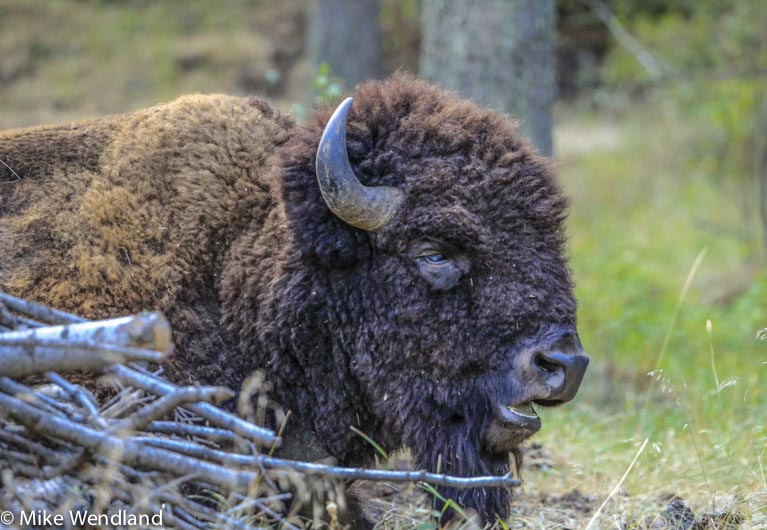 The story of the American bison is one of the most sad and captivating episodes in U.S. history. Once thought to be limitless in number – an estimated 50 million ranged across North America before European settlement – they were hunted to near extinction in the late 1800’s. Greed by hunters and a calculated political effort to eliminate the food and main staple of the American Indian tribes were the reasons.
The story of the American bison is one of the most sad and captivating episodes in U.S. history. Once thought to be limitless in number – an estimated 50 million ranged across North America before European settlement – they were hunted to near extinction in the late 1800’s. Greed by hunters and a calculated political effort to eliminate the food and main staple of the American Indian tribes were the reasons.
From 50 million, the senseless slaughter left about 100 animals in the wild in the late 1800s.
What happened to the bison is truly one of America’s most shameful stories. For non-native buffalo hunters they were the equivalent of a gold mine on four legs. This group hunted bison from trains and horseback for their tongues, hides, bones and little else. The tongue was, and still is considered a delicacy. Hides were prepared and shipped to the east and Europe for processing into leather. Remaining carcasses were, for the most part, left to rot. By the time nothing but bones remained, they too were gathered and shipped via rail to eastern destinations for processing into industrial carbon and fertilizer. By the 1890s with numbers nearing extinction, the bison "gold rush" was over.
At the same time, the American government openly encouraged elimination of the Plains Indians’ primary food source, the bison. In so doing, the Indians would be forced into relatively small areas, or north into Canada. In either situation, food sources were either scarce or non-existent. The results were starvation, and high infant mortality amongst the Indian populations. In the end the west was open to European settlement and the start of the western beef industry.
The past can’t be undone. Today, though nowhere near the nubers of the 19th century, the bison is no longer in danger of extinction. the total herd size is in the 500,000 range, about 250,000 of which are based in Canada. And in west central Montana, the National Bison Range has played an important role in the successful recovery of these magnificent animals.
The fact that we can still see bison on the landscape is one of the finest accomplishments in the history of the National Wildlife Refuge System. President Theodore Roosevelt established the National Bison Range on May 23, 1908 when he signed legislation authorizing funds to purchase suitable land for the conservation of bison. It was the first time that Congress appropriated tax dollars to buy land specifically to conserve wildlife. The overall mission of the National Bison Range is to maintain a representative herd of bison, under reasonably natural conditions, to ensure the preservation of the species for continued public enjoyment.
The original herd of bison released in 1909 was purchased with private money raised by the American Bison Society and then donated to the Refuge. Today, 350-500 bison call this refuge home.
It is a great lace to visit. There are two loops that you can drive and see these magnificent animals, often also spotting the black bear, pronghorn antelope, mule deer and elk that share the 18,700 acre range. One loop, only five miles, is a flat gravel road that larger RVs could handle that goes by a bison display pasture. It takes abut a half hour.
The best loop, though, is only for automobiles or Class B RVs under 30-feet in length. It is a hilly 19-mile, one-way gravel road with lots of switchbacks and 10% grades that gains 2,000 feet in altitude. There are two hiking trails along this route. The half-mile Bitterroot Trail and the one-mile High Point Trail provide spectacular overlooks of the prairie. Dogs, on a leash, are allowed.
But the rest of this great preserve is off limits to hiking. Visitors must stay in their vehicles.Allow two to three hours for this route. And make sure you have your camera, as evidenced by the photos Jennifer and I took on our visit.
The Range is one of the last intact publicly-owned inter-mountain native grasslands in the United States. The visitor’s center has a great display and lots of information.
In general, the longer and steeper Red Sleep Mountain Drive is open from mid-May to early October with the shorter Winter Drive open the remainder of the season. The Visitor Center, with displays, restrooms and bookstore, is typically open daily from mid-May to early October but has limited hours during the winter season.
The range is strategically located about mid-way between Glacier National Park and Yellowstone National Park, not far from Flathead Lake and a half hour or so north of Missoula in the southern tier of Montana’s Glacier Country. It overlooks one of the longest valleys in the region: the Bitterroot, nearly 100 miles long and 25 miles wide, bordered by the jagged peaks of the Bitterroot Mountains on the west and the rolling terrain of the Sapphire Mountains to the east,
There’s no camping at the National Bison Range and the preserve closes at dark. Camping can be found around Missoula to the south and in some of the smaller communities near the range.
Drive slow. They walk right out in front of you and often like to hold staring contest with nice looking RVs.
Pronghorn antelope
The Bitterroot Trail leads to a spectacular overlook.
Educational display outside the visitors center
The deer and the antelope do indeed play on the range with the buffalo. This young pronghorn found some sweet grass.
Elk are also common throughout the range. Elk drop their impressive antlers each year to grow new ones. This display of a bunch of dropped antlers is at the visitor center and is a common decorative piece you’ll see throughout the west.


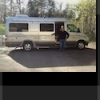
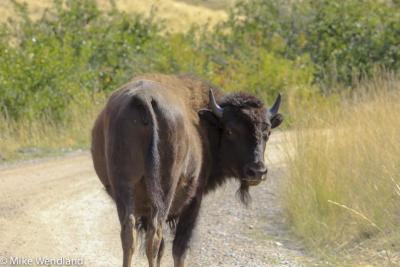
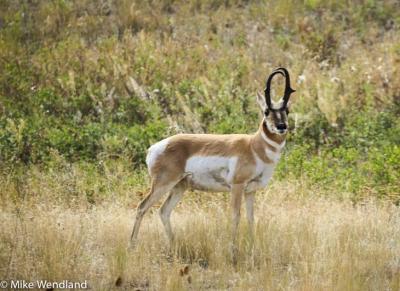
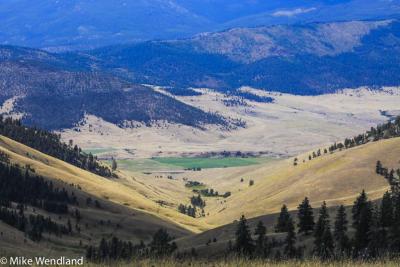


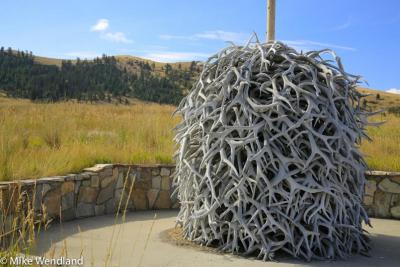
0 Comments
Recommended Comments
There are no comments to display.
Please sign in to comment
You will be able to leave a comment after signing in
Sign In Now